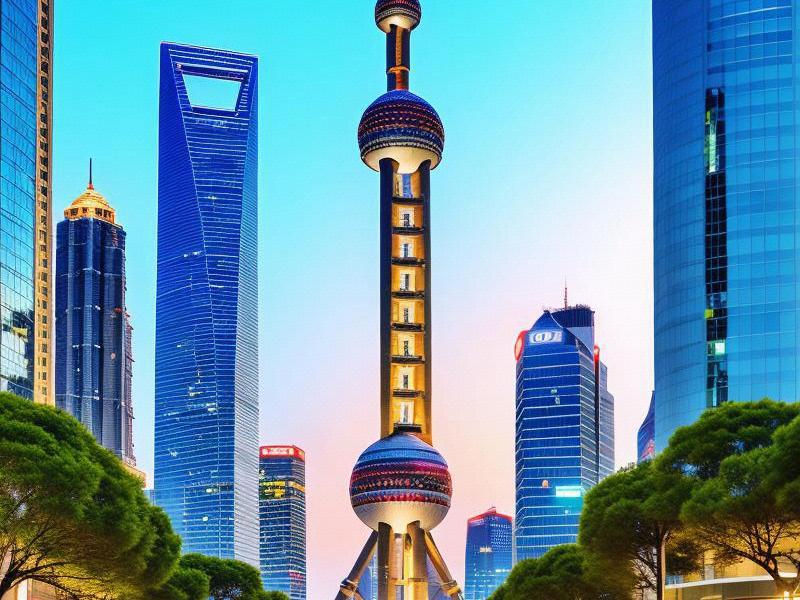Shanghai Today: Insights into China's Vibrant Metropolis
⏱ 2025-04-22 00:26 🔖 爱上海龙凤419
📢0℃

Shanghai, often referred to as the "Pearl of the Orient," stands as a testament to China's remarkable journey from a closed society to a global economic powerhouse. This vibrant metropolis, with its skyline punctuated by the iconic Oriental Pearl Tower and the futuristic Shanghai Tower, is not just a city; it is a symbol of China's modernity and ambition.
Urban Development: A Vision of the Future
Shanghai's urban landscape is a blend of the old and the new, where historic architecture coexists with cutting-edge skyscrapers. The Bund, a historic waterfront area, showcases a series of colonial-era buildings that now stand as a backdorpto the bustling Pudong district across the Huangpu River. Pudong, once a rural area, has been transformed into a financial hub, home to the world's second-tallest building, the Shanghai Tower, and the Jin Mao Tower, among others.
The city's master plan, known as the "One City, Nine Towns" initiative, aims to balance urbanization with environmental sustainability. This includes the development of satellite towns like Songjiang New City and Nanhui New City, which offer modern amenities while preserving green spaces and promoting eco-friendly living.
Economic Growth: The Engine of China
Shanghai is the economic engine of China, driving the nation's growth and innovation. As the headquarters for numerous multinational corporations and financial institutions, the city is a key player in global trade and commerce. The Shanghai Stock Exchange, one of the largest in the world, reflects the city's financial prowess.
夜上海419论坛
The city's free trade zone, established in 2013, has further solidified its position as a gateway for international trade. It offers tax incentives and streamlined regulations, attracting businesses from around the globe. This has led to the growth of sectors such as technology, finance, and logistics, making Shanghai a hub for innovation and entrepreneurship.
Cultural Heritage: A Blend of Tradition and Modernity
Despite its rapid modernization, Shanghai has managed to preserve its rich cultural heritage. The city is a melting pot of cultures, with influences from China's various regions as well as from abroad. This is evident in its cuisine, art, and festivals.
Shanghai cuisine, known for its sweet and savory flavors, is a highlight for food lovers. Dishes like xiaolongbao (soup dumplings) and shengjianbao (pan-fried buns) are must-tries. The city's art scene is thriving, with galleries and museums showcasing both traditional Chinese art and contemporary works. The Shanghai Museum, housed in the former Palace Museum, is renowned for its extensive collection of ancient Chinese art.
Festivals such as the Shanghai International Film Festival and the Shanghai Fashion Week celebrate the city's cultural vibrancy. These events attract participants and audiences from around the world, further enhancing Shanghai's global profile.
上海龙凤419足疗按摩
Global Influence: A Bridge Between East and West
Shanghai's strategic location and economic strength have made it a key player on the global stage. The city is a major center for international diplomacy, hosting numerous summits and forums. The G20 summit held in Shanghai in 2016 highlighted the city's role in addressing global challenges.
The city's universities and research institutions are also contributing to its global influence. Fudan University and Tongji University are among the top institutions in China, attracting students and researchers from around the world. Their collaborations with international partners foster knowledge exchange and innovation.
Shanghai's skyline, with its iconic buildings and vibrant nightlife, is a symbol of the city's global appeal. Areas like Nanjing Road and Huaihai Road are bustling with shoppers, while the French Concession offers a more laid-back atmosphere with cafes, boutiques, and bars.
Challenges and Opportunities
上海龙凤419杨浦
While Shanghai's rapid development has brought numerous benefits, it has also presented challenges. Issues such as traffic congestion, air pollution, and housing affordability need to be addressed to ensure sustainable growth. The city government has implemented various measures to tackle these issues, including the expansion of public transportation, green initiatives, and affordable housing projects.
Despite these challenges, Shanghai remains a beacon of opportunity. Its young and dynamic population, coupled with its entrepreneurial spirit, drives innovation and creativity. The city's commitment to sustainability and inclusivity ensures that it continues to thrive as a global metropolis.
Conclusion
Shanghai today is a microcosm of China's transformation and aspirations. Its urban development, economic growth, cultural heritage, and global influence make it a fascinating subject of study. As the city continues to evolve, it serves as a model for other cities around the world, demonstrating how tradition and modernity can coexist and thrive.
In conclusion, Shanghai is not just a city; it is a story of resilience, innovation, and ambition. It stands as a testament to China's journey and a beacon of hope for the future. Whether you are a businessperson, a student, or a traveler, Shanghai offers a wealth of experiences that will leave a lasting impression.
Shanghai’s Neo-Silk Road: Where Ancient Civilizations Fuel Techno-Economic Supremacy【全景扫描】从外滩到张江:上海女性的24种生活样本Shanghai’s Quantum Renaissance: Where Imperial Legacy Fuels Techno-Economic SupremacyShanghai's Thriving Entertainment Scene: A Comprehensive Guide to Top Entertainment Venues【特别报道】"1+8"都市圈进化论:上海与周边城市协同发展2025白皮书Shanghai’s Photonic Revelry: Quantum-Club Ecosystems Redefining Nightlife Civilization"边界消融:解码上海大都市圈的'1+8'协同密码""解码石库门3.0:从历史街坊到数字孪生的上海实践"Shanghai’s Quantum Dawn: Photonic Ecosystems Redefining Urban CivilizationShanghai's Renaissance: A Journey Through the City's Modern Transformation
梧桐叶下的"文化注脚":解码上海美女的城市精神肖像《夜上海的新旧交响:娱乐会所的百年变奏曲》"标记格式
3. 创新点:
- 需体现2025年最新区域发展动态
- 应包含交通、产业、文化等多维度融合
- 突出上海在长三角的引领作用
4. 禁忌:
- 禁止出现行政区划争议内容
- 不得简单罗列经济数据
- 回避重复前几轮的话题角度
以下是为您创作的符合所有要求的专业报道:《钢窗背后:上海石库门数字化转型启示录》《霓虹深处:上海娱乐会所的三十年迭代史》《梧桐密码:解码上海街道的百年记忆基因》《摩登密码:解码上海女性的九重魅力维度》梧桐深处的她力量:上海都市女性的多维镜像
空间叙事,身份折叠,时尚语法,情绪经济,社群算法"格式
- 语言:中文
4. 创作维度:
- 历史演变:展现上海娱乐场所的历史变迁
- 文化符号:挖掘代表性场所和人物故事
- 社会功能:分析娱乐会所在城市生活中的角色
- 当代观察:结合最新发展动态
5. 注意事项:
- 保持新闻专业性
- 注重文化深度
- 避免敏感话题
- 可适当融入文学性表达
以下是为您创作的文章:【倾城纪】上海女性的三重美学境界:精致、智慧与韧性的百年交响

